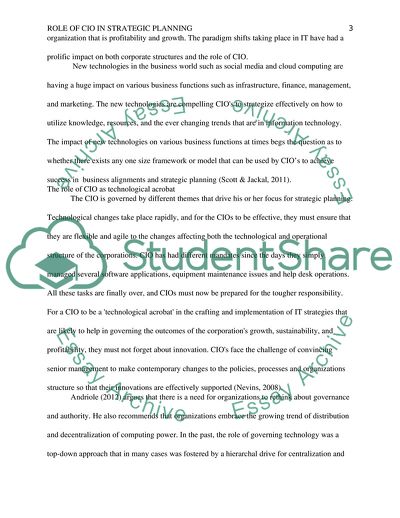Cite this document
(The Role of CIO in Effective Information Technology Strategic Planning through Corporate Governance Literature review Example | Topics and Well Written Essays - 2500 words, n.d.)
The Role of CIO in Effective Information Technology Strategic Planning through Corporate Governance Literature review Example | Topics and Well Written Essays - 2500 words. https://studentshare.org/information-technology/1881756-cio
The Role of CIO in Effective Information Technology Strategic Planning through Corporate Governance Literature review Example | Topics and Well Written Essays - 2500 words. https://studentshare.org/information-technology/1881756-cio
(The Role of CIO in Effective Information Technology Strategic Planning through Corporate Governance Literature Review Example | Topics and Well Written Essays - 2500 Words)
The Role of CIO in Effective Information Technology Strategic Planning through Corporate Governance Literature Review Example | Topics and Well Written Essays - 2500 Words. https://studentshare.org/information-technology/1881756-cio.
The Role of CIO in Effective Information Technology Strategic Planning through Corporate Governance Literature Review Example | Topics and Well Written Essays - 2500 Words. https://studentshare.org/information-technology/1881756-cio.
“The Role of CIO in Effective Information Technology Strategic Planning through Corporate Governance Literature Review Example | Topics and Well Written Essays - 2500 Words”. https://studentshare.org/information-technology/1881756-cio.


